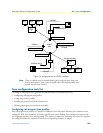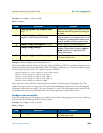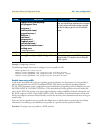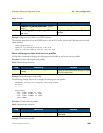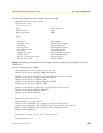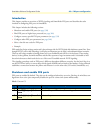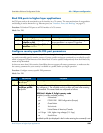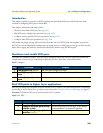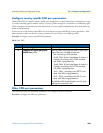
Introduction 538
SmartWare Software Configuration Guide 43 • FXS port configuration
Introduction
This chapter provides an overview of POTS signaling and SmartNode FXS ports and describes the tasks
involved in configuring FXS ports in SmartWare.
This chapter includes the following sections:
• Shutdown and enable FXS ports (see page 538)
• Bind FXS ports to higher layer protocols (see page 540)
• Configure country specific FXS port parameters (see page 539)
• Configure other FXS port parameters (see page 540)
• Select a low-bit-rate codec for FXS ports
• Example
FXS stands for foreign exchange station and is the exchange side of a POTS (plain old telephone system) line. Even
though POTS is seen as old technology it still plays an important part in today's telecommunications networks.
There are still a large number of analog phone sets in use worldwide and will do so in the future. These analog
devices, be they phones, facsimile machines and the like, represent a large investment and it is desirable to have
the technical means to hook such devices to a Voice over IP enabled network. POTS signaling.
The signaling procedure used on FXS ports is different throughout different countries, but the basic idea is to
use the POTS line itself as a current loop which signals off-hook and on-hook of the handset. Going off-hook
establishes a connection between the phone and whatever is on the other side (CO switch, SmartNode, etc.).
Shutdown and enable FXS ports
FXS ports are enabled by default. They also can be configured when they are active. But keep in mind that con-
figuration of an active port temporarily disables the port for a short time (some milliseconds).
Mode: Context CS
Step Command Purpose
1 (config)#port fxs slot port Enter FXS port configuration mode
2 (prt-fxs)[slot/port]#shut-
down
Shutdown the port. All active calls are dropped!
3 (prt-fxs) [slot/port]#no shut-
down
Activate the port.




